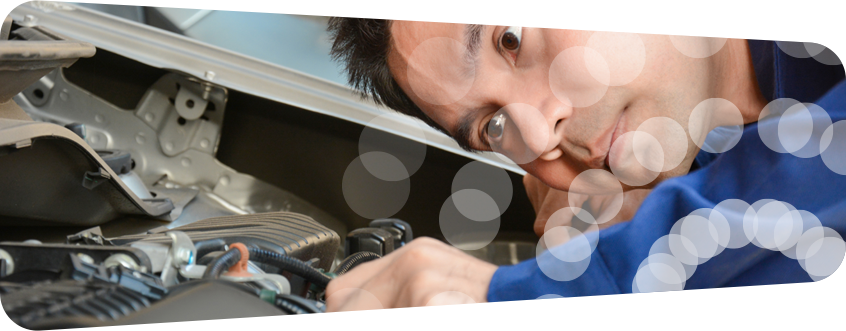Applications
NanoTracers are used in many applications around the globe. Users include Industries, Academic institutions as well as Governmental organizations. Click on the map-icons for more information on some selected applications.
Aireas Eindhoven City Air Quality Network
The Aireas metrology network in and around Eindhoven, the Netherlands has been operational since 2013. The network is consisting of 30 stations, 6 of which are equipped with the stationary NanoMonitor (successor device of the NanoTracer RM). The Network is used to drive public awareness of the impact of environmental parameters. Actual values are available via a life map open to the public, and awareness is further driven by social media activities (eg YouTube). See website (in Dutch): www. aireas.com).
School Traffic UPF exposure for Children
Queensland University has been using NanoTracers for studies on personal exposure measurement. Significant studies have been carried out on school traffic using both long-term reference studies and mobile NanoTracers that were carried by children on there daily school traffic routes. See: http://eprints.qut.edu.au/65099/1/MAZAHERI_School_children%E2%80%99s_personal_exposure_EST.pdf for more details.
Schiphol Airport environment UFP measurements
Exposure to UFP due to air traffic has a growing attention. In the Netherlands several studies have been carried out on the largest airport, Schiphol. For mobile measurements NanoTracers were used in combination with more stationary equipment (eg SMPS). For the full report (in Dutch) see: http://www.rivm.nl/dsresource?objectid=rivmp:289756&type=org&disposition=inline&ns_nc=1.
Kopenhagen Airport ground handling staff
To determine the exposure to UFP of airport employees in 30 members of Kopenhagen Airport ground crew were followed during 8 days with NanoTracer personal exposure sensors. The setup of this study (performed by the Section of Environmental Health, Department of Public Health, University of Copenhagen), as well as first conclusions can be found here : http://journals.plos.org/plosone/article?id=10.1371/journal.pone.0106671
Kopenhagen Elderly home study
To explore effects of exposure to ambient and indoor pollutants with various disease markers, a 4 weeks home air filtration study was carried out among a panel of 48 elderly citizens (27 locations) of Kopenhagen, Denmark. This study was managed by the Section of Environmental Health, Department of Public Health, University of Copenhagen. Indoor UFP measurements were carried out with NanoTracers during 24 hrs at begin, mid and end-point of the 4-week period. The silent operation of the NanoTracers is a significant benefit in acceptability for indoor exposure measurements (bedrooms, offices, schools). For more information see: http://www.ncbi.nlm.nih.gov/pmc/articles/PMC4344687/
Urban Air Quality for Barcelona commuters
UFP exposure in urban areas may be dependent on the selected mode of operation. In this study (carried out by Institute of Environmental Assessment and Water Research Barcelona Spain and DICeM�University of Cassino and Southern Lazio, Cassino Italy) 78 trips with walking, bus, tram and subway have been assessed. The particle concentration proved to be lowest in subway travel, and highest while travelling in diesel bus. City centre traffic crossings show particle transient peaks above 1�105 part./cm3. Full paper can be found : http://www.sciencedirect.com/science/article/pii/S0013935115300426
Personal exposure during industrial process: glass breaking
Various industrial processes create exposure to Ultra fine particles. In case of engineered nanomaterials this is explicit. However, some processes create high exposure rates without EMN being involved. In this study, carried out by ArboNet (Dutch EHS organisation) in cooperation with software partner PIMEX the production of LCD screens with coatings based on nano-size particles was investigated. NanoTracers were used for personal mobile measurement as well as background sensing. Reference sensor was a SMPS. It was found that the production of the screens did not lead to high exposure rates. However, the breaking of wast glass did indicate high levels of UFP exposure. By adapting the work instructions this could be significantly reduced. See this YouTube movie : https://www.youtube.com/watch?v=YT3JGvJAKrc
Workplace exposure pilot manufacturing facility
To assess exposure at an industrial workplace UFP measurements were carried out. As part of a four-step approach starting with a paper risk-study in the second step NanoTracers were used to assess exposure from manufacturing processes vs. the local background levels. Using the mobile device specific spots in the manufacturing site could be identified that could be improved to reduce the exposure levels. As a next (third) step specific positions were identified to execute multi-day sampling of materials, to further pinpoint improvement opportunities.
Children exposure to air pollution in rural Bhutan
Traditionally exposure assessment studies in developing countries have been bases on fixed-site monitoring. This study followed school children in three sites and quatified daily personal exposure to UFP with real time monitoring NanoTracer devices. Diaries were kept to correlate exposure levels to activity and the relevant micro-environment. The highest UFP exposures resulted from cooking and eating (64% of daily exposure, due to cooking on traditional wood-fired mud cookstoves). The lowest UFP exposures were during time spend outdoors at school. Download is available at: https://www.researchgate.net/publication/278790140_Children's_personal_exposure_to_air_pollution_in_rural_villages_in_Bhutan

